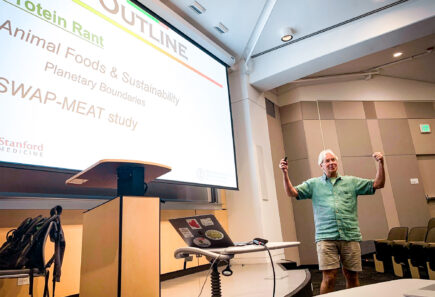
Rethinking Meat: Helping students find their place in the alternative protein space
Amy Huang Chloe Raygoza Ellie Fajer Gianna Dugan Hannah HuddlestonStudents from the Stanford Alt Protein Project reflect on their experience breaking ground on alternative protein education at their university.







